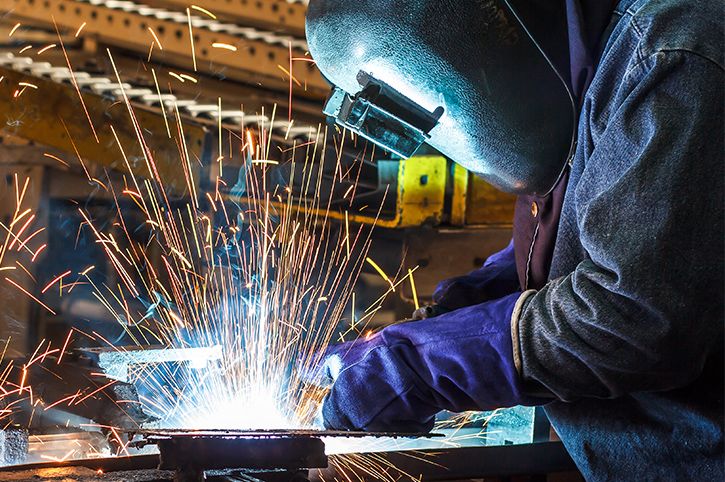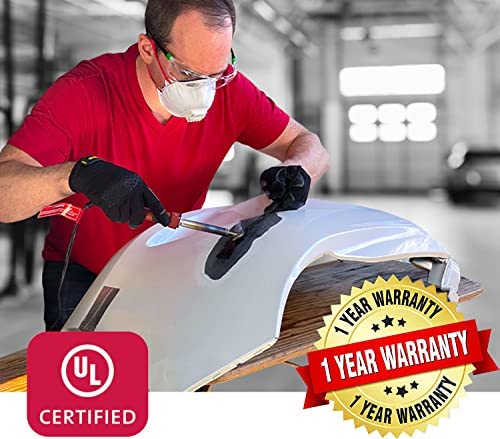Common Welding Repair Work Issues and Just How to Address Them Efficiently
Welding repairs often run into a variety of concerns that can endanger the stability of the last item. Typical problems include inadequate infiltration, porosity, and imbalance, among others. Each problem offers unique obstacles that require specific techniques for resolution. Comprehending these issues is necessary for welders intending to enhance their abilities and results. This discussion will discover these typical welding repair service concerns and effective approaches to resolve them.
Insufficient Infiltration
Poor penetration happens when the weld steel stops working to completely fuse with the base product, leading to weak joints and possible architectural failures. This problem often comes from insufficient warm input, incorrect electrode angle, or inappropriate welding rate. Welders may encounter poor infiltration because of a miscalculation of the essential parameters for a specific product thickness or kind. Additionally, contamination on the base product's surface area can prevent reliable bonding, aggravating the issue. To attend to insufficient infiltration, welders should ensure appropriate settings on their equipment and preserve a tidy work surface. Normal assessment of welds is suggested to determine any kind of deficiencies early, enabling for prompt adjustments and the prevention of jeopardized architectural honesty in bonded settings up.
Porosity
Porosity is a typical problem in welded joints that materializes as small gas bubbles entraped within the weld metal. This defect can compromise the stability of the weld, causing decreased strength and prospective failing under tension. Belgrade. Porosity usually occurs from contamination, moisture, or improper welding methods, which allow gases to get away into the liquified weld pool. To resolve porosity, welders should assure correct surface area prep work, keep a clean functioning setting, and use appropriate welding specifications. Additionally, picking the ideal filler product and securing gas can alleviate gas entrapment. Routine assessment and testing of welds can assist determine porosity early, ensuring prompt restorative activities are taken, thereby preserving the high quality and dependability of the bonded structure
Misalignment
Misalignment in welding can develop from various aspects, including improper setup and thermal development. Comprehending the source is important for reliable resolution. Numerous correction methods are offered to realign parts and assure architectural integrity.
Reasons for Misalignment
Welding imbalance typically stems from a range of underlying concerns that can jeopardize architectural integrity. One key cause is improper fit-up of components before welding, which can bring about gaps and uneven surface areas. Variations in thermal growth during the welding process can also cause distortion, particularly if the materials being joined have various coefficients of growth. In addition, insufficient securing and fixturing might fail to hold components securely in location, leading to movement throughout welding. Improperly kept equipment, consisting of welding makers and devices, may introduce incongruities in the weld grain, more adding to imbalance. Operator mistake, stemming from not enough training or experience, can additionally play a significant role in creating misaligned welds.

Modification Techniques Readily Available
Resolving misalignment effectively needs a combination of corrective strategies tailored to the specific concerns available. One typical technique is making use of fixtures or jigs to hold elements in the appropriate setting during welding, making sure consistent placement. Additionally, pre-heating the materials can aid lower distortion and enhance fit-up. For considerable imbalance, mechanical realignment strategies, such as using hydraulic jacks or clamps, can be utilized to deal with the setting before welding. Post-weld warmth therapy may also be required to alleviate tensions brought on by imbalance. Finally, mindful inspection and adjustment during the configuration stage can avoid imbalance concerns from coming to be considerable troubles, advertising a smoother welding process and boosting total structural honesty.
Distortion
Distortion is a typical challenge in welding that can occur from various variables, consisting of unequal heating & cooling. Understanding the reasons of distortion is important for applying reliable avoidance techniques. Addressing this concern not just enhances structural stability but likewise enhances the general quality of the weld.
Root causes of Distortion
When subjected to the intense heat of welding, materials frequently undertake adjustments that can result in distortion. This sensation mainly arises from thermal development and tightening during the welding process. As the weld location warms up, the material expands; upon cooling, it gets, which can produce internal tensions. In enhancement, unequal heating across a work surface can intensify these stress and anxieties, resulting in bending or flexing. The type of material additionally plays a considerable function; metals with differing thermal conductivity and coefficients of development may react in different ways, bring about unforeseeable distortions. Inadequate joint design and poor fixturing can contribute to misalignment throughout welding, enhancing the possibility of distortion. Recognizing these causes is crucial for effective welding fixing and prevention techniques.
Prevention Techniques
Reliable avoidance strategies for distortion during welding emphasis on regulating heat input and making sure appropriate joint design. Maintaining a consistent warmth input assists to lessen thermal development and tightening, which can cause distortion. Using techniques such as preheating the work surface can also reduce the temperature gradient, promoting uniform home heating. Additionally, selecting suitable joint styles, such as T-joints or lap joints, can enhance stability and decrease Get the facts stress focus. Carrying out correct fixturing to safeguard the workpieces in place better help in preserving placement during the welding procedure. Staggered welding sequences can disperse heat more equally, avoiding localized distortion. By using these approaches, welders can substantially decrease the probability of distortion and improve the overall high quality of their welds.
Splitting
Cracking is a typical issue encountered in welding repairs, commonly resulting from different aspects such as incorrect air conditioning rates, product option, or poor joint prep work. The event of splits can significantly jeopardize the honesty of the weld, bring about possible failures during operation. To resolve this issue, welders have to first assess the origin, making sure that products work and suitably chosen for the certain application. Additionally, regulating the cooling price during the welding process is necessary; quick cooling can cause tension and lead to breaking. Appropriate joint design and prep work also add to lessening the risk. Applying these strategies can enhance weld high quality and toughness, ultimately decreasing the chance of breaking in ended up weldments.

Insufficient Fusion
A significant concern in welding repair services is insufficient blend, which takes place when the weld steel does not effectively bond with the base material or previous weld passes - Belgrade Fabrication. This flaw can result in weaknesses in the joint, potentially endangering the stability of the welded framework. Elements adding to insufficient combination include inadequate heat input, improper welding technique, and contamination of the surfaces being joined. To resolve this issue properly, welders must ensure proper pre-weld cleaning and surface prep work, along with readjust their welding criteria to accomplish sufficient infiltration and combination. Normal inspection during the welding procedure can also help recognize incomplete combination early, permitting timely corrective procedures to improve the overall top quality of the weld
Overheating
While welding repair services can enhance architectural honesty, overheating provides a substantial challenge that can lead to material destruction. Too much heat throughout welding can modify the mechanical buildings of metals, resulting in reduced toughness, increased brittleness, and bending. This sensation is specifically crucial in high-stress applications where architectural reliability is paramount. Determining getting too hot can include visual assessments for staining or distortion, in addition to checking temperature throughout the welding process. To minimize the dangers related to getting too hot, welders ought to employ appropriate methods, such as regulating warmth input, readjusting traveling speed, and utilizing ideal filler products. Additionally, carrying out pre- and post-weld warmth treatments can assist restore material homes and enhance the general top quality of the fixing, guaranteeing long-term performance and safety and security.
Often Asked Questions
What Are the Typical Indicators of a Welding Flaw?

How Can I Examine My Welds for Top quality?
To evaluate welds for top quality, one can utilize aesthetic evaluations, ultrasonic screening, and radiographic methods. Each technique ensures architectural honesty, determines problems, and confirms adherence to specified criteria, ultimately improving the integrity of the welded joints.
What Security Precautions Should I Take While Welding?
When welding, one need to pop over to this site focus on safety and security by using check out here appropriate personal safety devices, ensuring appropriate ventilation, safeguarding combustible materials away, maintaining a tidy work area, and recognizing environments to stop mishaps and injuries.
Can I Repair a Weld Without Redesigning the Entire Joint?
Repairing a weld without renovating the entire joint is feasible, depending on the damages (Montana Mobile Welding and Repair Welding). Techniques such as grinding, including filler product, or making use of a welding process can efficiently attend to certain defects while maintaining the surrounding structure
What Tools Are Necessary for Effective Welding Repairs?
Important devices for efficient welding repair services include a welding machine, wire brush, grinder, safety gear, clamps, and filler materials. Each device plays an important role in making sure quality and security throughout the fixing process. Porosity usually emerges from contamination, wetness, or inappropriate welding methods, which enable gases to leave right into the molten weld pool. Improperly conserved tools, including welding equipments and devices, may introduce disparities in the weld grain, more contributing to imbalance. When subjected to the extreme warmth of welding, materials frequently undergo adjustments that can lead to distortion. Cracking is an usual concern encountered in welding repair work, usually resulting from numerous variables such as improper air conditioning prices, product choice, or poor joint prep work. A considerable problem in welding repair work is incomplete fusion, which takes place when the weld metal does not sufficiently bond with the base material or previous weld passes.